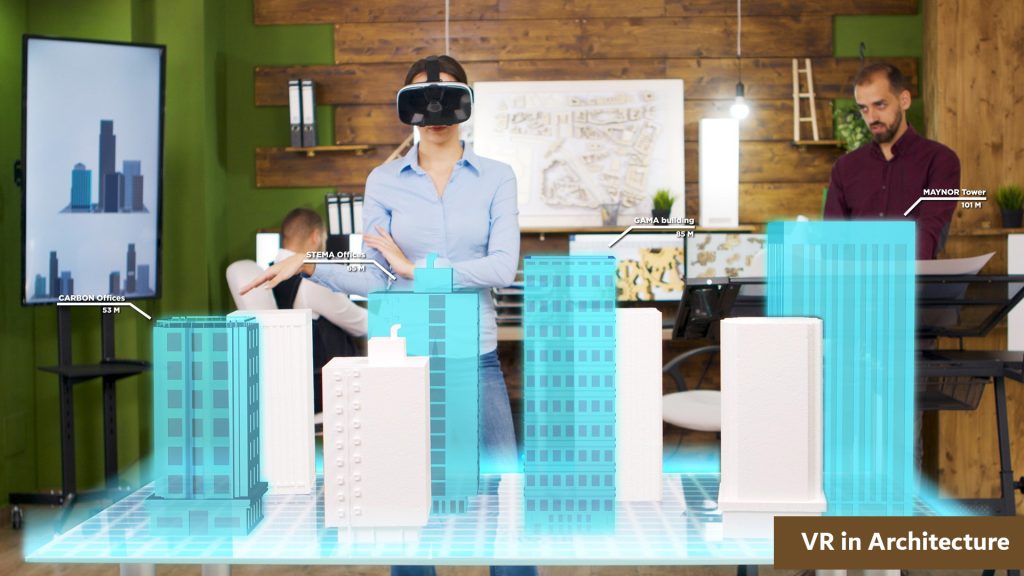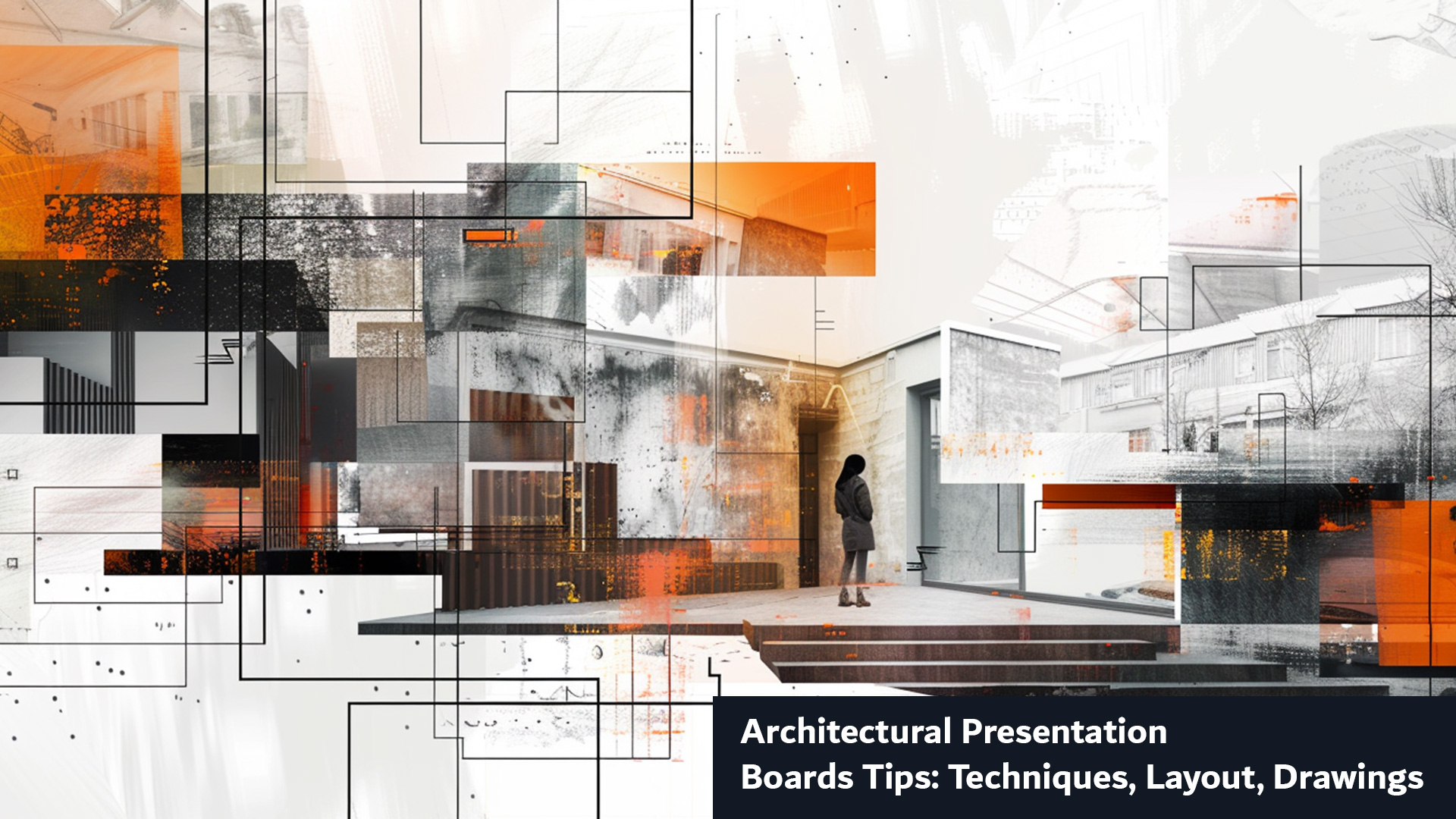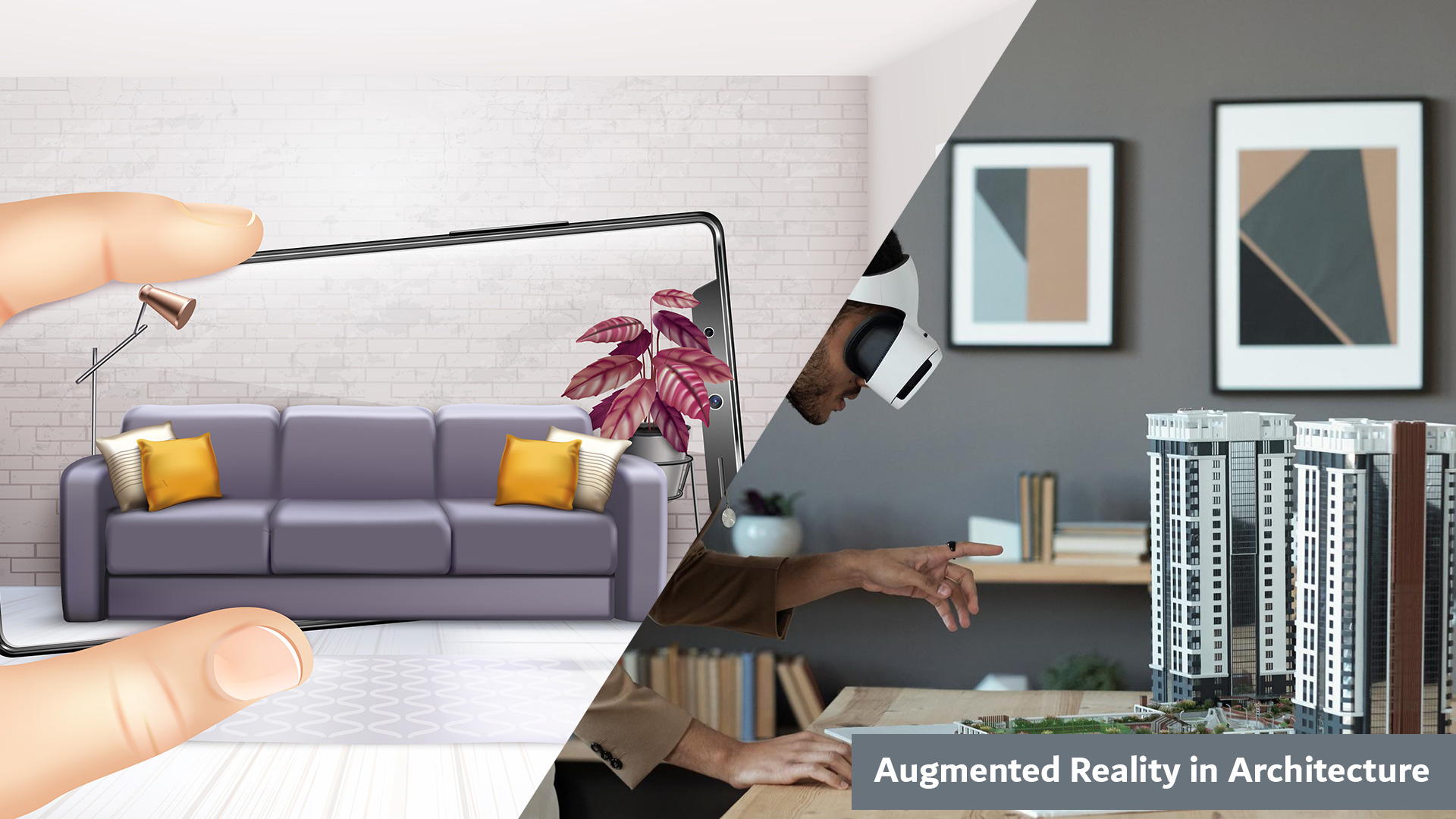Virtual Reality (VR) may sound superficial to many, but forward-thinking architects and the best manufacturing firms are already relying on virtual reality in architecture for better results.
The challenging thing in architecture is convincing clients about the security, design credibility, and appealing turnout of the structure. There should be something to clearly show people the brighter side of an under-process construction. Guess what? Technology has made it possible.
Among many advanced tech tools, Virtual Reality architecture is making a huge impact. It plays an important role in presenting a structure from idea generation to keeping an eye on the design. Thanks to virtual reality (VR) technology introduced in architecture in 2015, providing top-quality renders, animations, and immersive designs to share with clients. Let us know what is Virtual Reality (VR), the uses of virtual reality in architecture, and the benefits of virtual reality in architecture.
What is Virtual Reality (VR)
VR is an abbreviation for Virtual Reality. Virtual Reality is a computer-generated 3D animation visual and can be watched with external gadgets such as a screen or glasses. The gadget used in perceiving a virtual reality environment is known as a headset. It is widely in video games. It makes things super real.
Three dimensions introduced in virtual reality (VR) are– length, width, and height which make things seem tangible and factual. This helps create a more realistic experience. With a virtual reality (VR) technology gadget, you experience a different world, more like a parallel universe. It is one of the most potential technologies that holds the power to give goosebumps.
What Is Virtual Reality in Architecture
Virtual Reality technology in Architecture is roaring and making remarkable shifts in the building process. Virtual reality in construction helps architects to better envisage a space and present the project furnished every detail to clients.
Buyers feel their presence in the space to be built, supports construction companies to present their ideas and work with the possible outcome. The incorporation of virtual reality in the manufacturing industry has made work easier, fun, and productive. It is an attractive technology changing the way architects work and must be implemented in architecture and interior designing practices. In the next sections, we will know how virtual reality in architecture / VR in architecture helps in designing better structures.
Use of Virtual Reality in Architecture
Nine out of the top 20 architectural firms globally regularly incorporate virtual reality in their testing, project design, and business operations.
According to a CGarchitect survey, statistics of Virtual Reality used are as:
- Europe: 40%
- USA: 21%
- Asia: 11%
- Middle East: 3%
Out of total virtual reality VR users, 43% are from Architectural visualization studios, 22% from Architectural firms, and 4% from interior designing companies.
This data clearly illustrates how virtual reality VR is widely increasing its applications in the fields of architecture, construction, and design over time.
- Design Analysis with Virtual Reality (VR)
Virtual reality presentation gives an earlier indication of what is to be built. It is an immediate implementation of design that is just planned or briefed to clients. This helps in achieving more practical and personalized outcomes.
- Project Risk Detection
The foundation of builds becomes stronger by the use of virtual reality in design. Architects are using virtual reality to focus on the small details by placing themselves in the room they are designing. It enables team members to detect problems early on.
- Better Structure Review
Virtual Reality (VR) helps in project review before execution. Even if designers are doubtful, they can again revise it in this stage. Just walk into your virtual environment and recheck fittings, aesthetics, measurements, etc. for ensured development.
Benefits of Virtual Reality in Architecture
- Accuracy and Surety: the high-tech VR provides accuracy for architects. When rendering company crafts renders, virtual animations make it smoother and filter the quality with many techniques. You can look at the project with full-on confidence.
- Decent Interaction: VR allows viewers to interact completely with the frame. They can look at the design from either view ranging from static, animated, 360 degrees, panorama, video graphics, and whatnot. This makes the entire VR more valuable, informational, and worth investing in.
- Earlier Improvements: observing things closely can make or break the deal. However, the benefit of virtual reality VR in architecture profits them all. Every finish, setting, and fixture looked and not accepted can be changed earlier. This helps in making better improvements in results.
- Better Communication and Teamwork: Virtual reality lets the team work together on architectural models, even from different locations. This helps avoid misunderstandings and saves time during the planning and design stage.
- Customer growth and brand reputation: with better customer appreciation, Virtual reality tools help in subsequent increases in sales. It automatically builds a strong brand image among the audience and in the market.
Virtual Reality for Architects Projects Case Study
There are many cases and virtual reality for architects examples to understand its wide spectrum comprehensively. Let’s have a brief introduction to the given three use cases of VR in architecture models.
Case 1: Architectural Design Review, Flow and Safe Results
Virtual Reality (VR) in building construction helps in the manufacturing flow. Let us take an instance of a medical foundation building where a large architectural firm is designing a new hospital.
The hospital is a complex project with multiple buildings, departments, and patient care areas. The architects want to ensure that the hospital is designed to the highest standards. Also, each floor is safe and protected from possible mishaps.
VR is used to create a virtual model of the hospital. Designers can walk through the virtual hospital, inspect the different rooms and spaces, and get a better sense of how the hospital will function. This helps them to identify inefficiencies early on, before construction begins.
Benefits:
- Improved design quality and reduces construction costs.
- Better workflow and connectivity through the process.
- Detection of problems at earlier stages.
Case 2: Construction Planning and Coordination While Working
The use of Virtual Reality (VR) in construction services is widely benefiting Project managers and contractors. They use VR to plan and coordinate construction activities. They can simulate the movement of materials and equipment.
As an example when general contractor is building a new office building with multiple floors, offices, and conference rooms. The contractor wants to ensure that the building is constructed efficiently and safely.
Besides, they use VR to create a virtual model of the construction site. This digital model helps them imitate how materials and tools will be moved and spot possible safety risks. Virtual reality (VR) is also used for training construction workers on how to do their jobs safely.
Benefits:
- It improves construction efficiency and reduces the costs.
- Offers shorter construction timelines when the project’s flow is already known practically.
- Virtual reality applications in architecture have increased safety.
Case 3: Architectural Residential Rendering 3D Visualization with VR
Virtual Reality (VR) has transformed the way architects present designs to clients, offering real-life experiences that go beyond traditional blueprints. This case study relates to how VR is used for client visualization in residential architecture.
Suppose an architect is working on a new home and clients are unsure about if the outcome would fit their lifestyle, choices, and dream residence. With VR headsets, clients can explore different design options, materials, and spatial arrangements in real-time. Also, can look at the completely built structure.
This not only enhances client engagement but also ensures that the final design aligns closely with the client’s vision.
Benefits:
- Least communication gaps between clients and architecture companies.
- Personalized experience, and client satisfaction.
- Boost sales, brand reputation, and credibility.
The Bottom Line
Virtual reality in the architecture process is making tremendous refinements, allowing every participant to experience the construction model in a better way. VR technology is an amazing way of visualizing unbuilt models initially. At present, every best manufacturing firm, rendering studio, or 3d visualization company is suggesting to use of VR (Virtual Reality) for progressive results. We have read how it is dramatically changing the construction phases from idea to project deliveries. Learn to adapt to this fantastic technology to provide your best services in architectural agencies.
Frequently Asked Questions
How Virtual Reality VR in architecture is used?
Virtual reality in architecture is being used to visualize and experience project details, and accuracy even before it is made. It made a life-like project simulation making you feel like you are walking in the building. So, investors and stakeholders communicate effectively with the use of virtual reality (VR) technology in the architecture industry.
How many architects use VR – Virtual Reality in architecture?
Since virtual reality is an advanced technology, only the best architects started using it. 10 out of 20 architects rely on virtual reality in the designing process of construction.
What industries use Virtual Reality?
VR is limitless. Industries like healthcare, education, transport, real estate, marketing, construction, military, entertainment, media, and gaming widely use VR for better performance and outcomes.
How does virtual reality help select building materials?
Designers walk through the buildings virtually, install and remove materials, identify the pros and cons, and then make the final decision.









